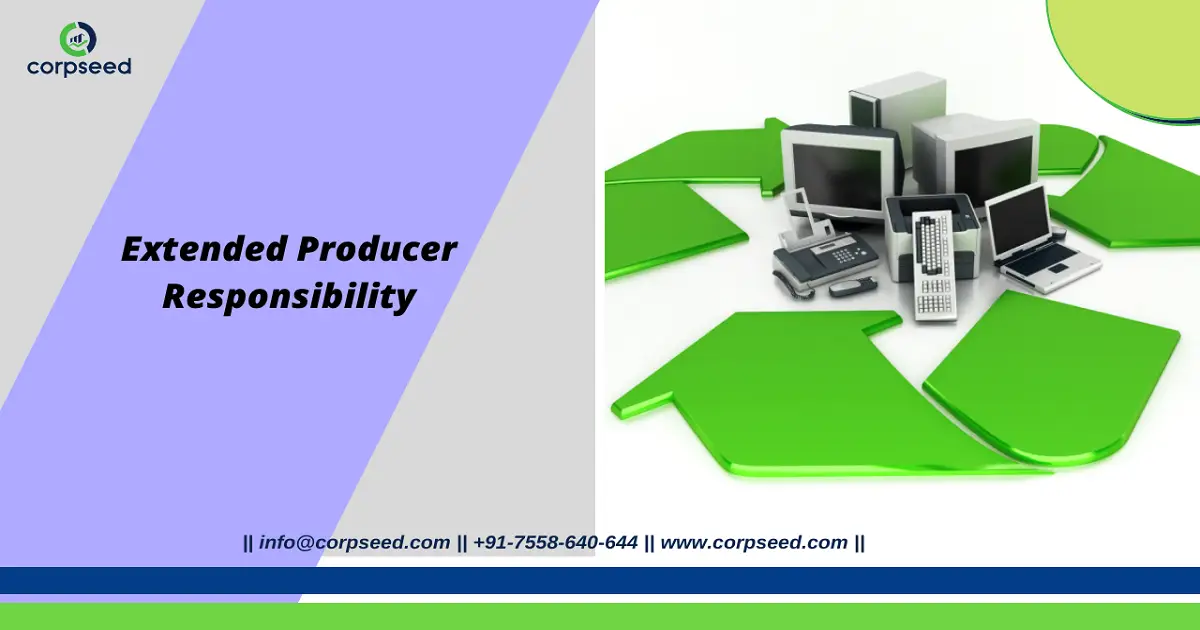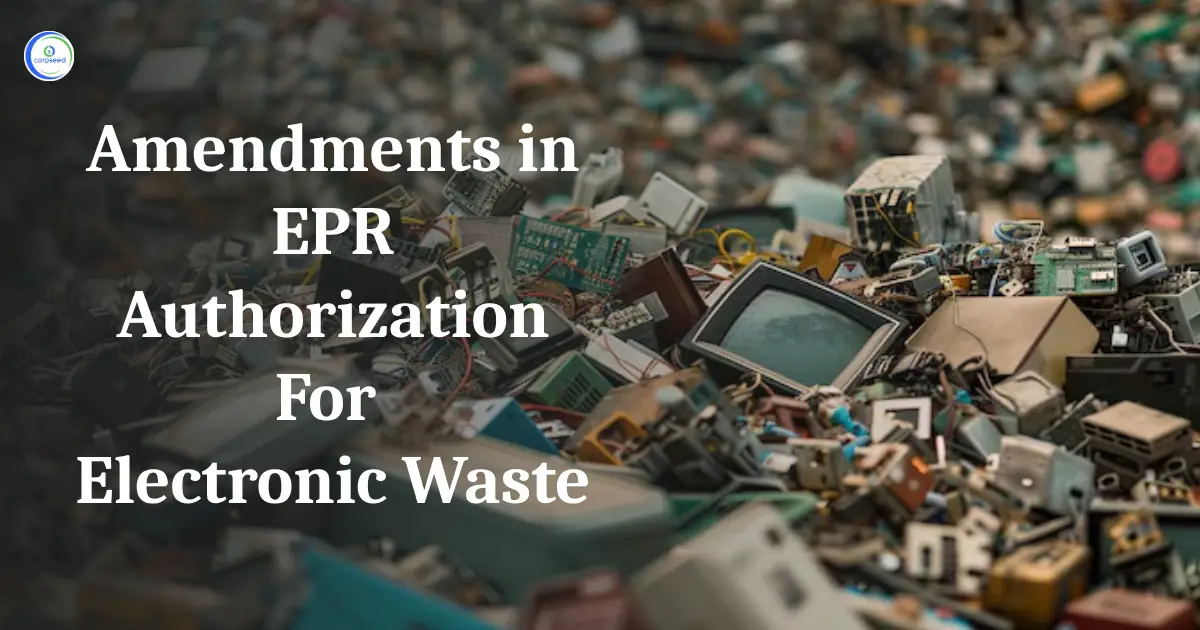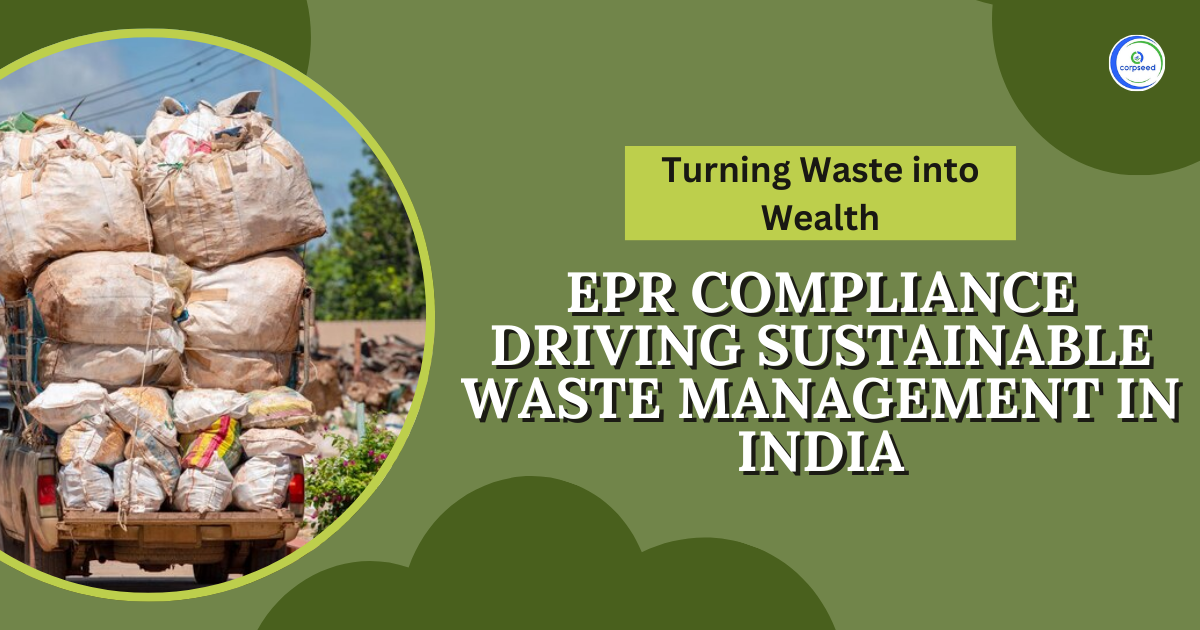Introduction
Extended producer responsibility is a practice and a policy approach during which producers take responsibility for the management of the disposal of products they produce once those products are designated as no longer useful by consumers. Just like, Electronic products have not only become an integral part of our lives, but also contribute significantly to environmental consequences. Throughout our lives, we are dependent upon a countless number of electrical and electronic products but we don’t think about what happens to these goods once they become obsolete or discarded. The usage of electronic goods has proliferated in recent decades, the quantity of electronic goods that are disposed of, is growing rapidly throughout the planet. Electronic waste or e-waste is an emerging problem in developed and developing countries around the world.
Table of Contents
Motivations for Extended Producer Responsibility (EPR) practices include a mixture of economic, environmental, and social factors. Extended Producer responsibility shifts the economic burden of the cost of disposal from the government to the manufacturer or producer of the product. Within an environmental context, products must be designed for recyclability, and extended producer responsibility encourages design for recycling while discouraging the use of toxic components in the product. Finally, extended producer responsibility meets increasing consumer demand for environmentally friendly products that can easily be recycled or are manufactured using recycled content. Extended producer responsibility is a product-focused strategy that encourages environmentally friendly design and disposal of products through the transfer of this responsibility to product producers.
Survey:
According to the Joint study conducted by the Associated Chambers of Commerce and Industry of India (ASSOCHAM), India is among the top five countries in the world, in terms of e-waste generation. Out of the total e-waste generated in India in 2016, only 20 per cent was documented to be collected properly and recycled, while there is no record of the remaining e-waste. Most of these wastes end up in dumping yards and recycling centres, posing a new challenge to the environment and policymakers as well.
Manufacturers should be encouraged to design environmentally friendly products by holding producers responsible for the costs of managing their products at the end of life as it is an effective way of e-waste management because the producers have the greatest control over product design and marketing; some companies have the greatest ability and responsibility to reduce toxicity and waste. Organization for Economic Co-operation and Development (OECD) countries, Japan and China, to name a few, are some of the countries which have benefited themselves from the EPR programmes. The E-Waste (Management and Handling) Rules, 2011 introduced the concept of EPR for the first time in India which made all the producers of electronic goods responsible for waste production management. The amendment to the e-waste policy, with the new E-Waste (Management) Rules, 2016, set stringent targets for the producers to collect and recycle end-of-life products of their goods. However, a large portion of waste collection is done by the informal sector implementation of EPR is a big challenge for India. This paper attempted to explore and buttress the possibility of extended producer responsibility (EPR) in the Indian context, by analyzing different characteristic aspects of it.
Historical Background
The Extended Producer Responsibility (EPR) policy was introduced by Thomas Lindhqvist in a report to the Swedish Ministry of Environment in 1990. The report was the result of an analysis done on various Swedish and foreign recycling and waste management schemes, as well as policies used by these companies for promoting cleaner production. It was introduced in various European countries viz. Austria, Germany, Netherlands, Switzerland, and the Scandinavian countries, when were planning and commencing the implementation of various policy instruments to improve the management of end-of-life products. Soon it spread to most of the Organization for Economic Co-operation and Development (OECD) countries and several developing countries in the past few years.
In India first attempt was made to enforce the EPR policy in the year 2005, through a private member’s Bill on “The Electronic Waste (Handling and Disposal) Bill, 2005.” It was introduced in Rajya Sabha by Shri Vijay J. Darda, Hon’ble Member from Maharashtra. The Bill recognized when there was no proper way of e-waste disposal and handling, every home had a number of electronic goods. Once these goods are discarded or become obsolete, they are either thrown in the garbage or sold to scrap dealers, who dismantle the goods and keep the useful part and the rest forms a part of landfills. It criticized the improper way of handling the way and demanded for regulation of electronic waste disposal. This Bill sought to supply for correct handling and disposal of millions of tonnes of electronic waste by prescribing norms and fixing regulations and duties on manufacturers, recyclers and consumers with regard to the disposal of electronic waste and for all matters connected to it. The Bill however lapsed in July 2010. The E-Waste (Management and Handling) Rules, 2011 introduced the concept of EPR for the first time in India, while the E-Waste (Management) Rules, 2016 brought more stringent targets for the collection of end-of-life products and simplified the process of applying for EPR authorization.
Objective of EPR
Thomas Lindhqvist re-allocated product responsibilities in two families of policy objectives:
- Design improvements of products and their systems.
- High utilization of product and material quality through the effective collection, treatment, reuse or recycling in an environmentally friendly and socially desirable manner.
The design/upstream objectives is a unique feature of EPR. It generally encourages the producers to design their products in such a way so as to reduce the consumption of virgin materials, to undertake product design changes, to reduce waste material and ensure the closure of material loops in order to promote resource efficiency and sustainable development. It can be further divided into two types, product design improvement and product system design improvement. Some examples of product design improvements are design for disassembly, design for the environment and design for recycling. Product system improvements are concerned with all other factors that enable functionality throughout the lifecycle.
The waste management/downstream objectives cover collection, treatment, and reuse and recycling. Though these are conventional waste management techniques but EPR has several advantages to other approaches in achieving them. First, placing clear responsibilities on one actor would avoid a situation where everyone’s responsibility becomes no one’s responsibility. Second, it is a good way to source finance from actors at the point of sale of the goods. In this way EPR offers an attractive financial solution to manage the waste problem for the governmental agencies.
This portion of the site is for informational purposes only. The content is not legal advice. The statements and opinions are the expression of author, not corpseed, and have not been evaluated by corpseed for accuracy, completeness, or changes in the law.
BOOK A FREE CONSULTATION
Get help from an experienced legal adviser. Schedule your consultation at a time that works for you and it's absolutely FREE.





.webp)



